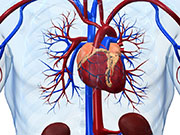Incorporation of expected HbA1c distribution has modest effect on post-test atherosclerotic CVD risk
THURSDAY, Sept. 10, 2015 (HealthDay News) — In the context of conventional cardiovascular disease (CVD) risk factors, hemoglobin A1c (HbA1c) has a modest effect on predicted atherosclerotic CVD risk, according to a study published online Sept. 8 in Circulation: Cardiovascular Quality and Outcomes.
Jamie A. Jarmul, from the University of North Carolina at Chapel Hill, and colleagues examined the effect of HbA1c on CVD risk in the context of other CVD risk factors. HbA1c and other CVD risk factor measurements were analyzed in 2,000 individuals aged 40 to 79 years without preexisting diabetes mellitus or CVD. For a set of example scenarios, post-test 10-year atherosclerotic CVD risk was calculated incorporating the actual versus predicted HbA1c, according to established methods.
The researchers found that significant predictors in the model included age, sex, race/ethnicity, and traditional cardiovascular risk factors, with the expected HbA1c distribution significantly higher in non-Hispanic black, non-Hispanic Asian, and Hispanic individuals versus non-Hispanic whites/others. A modest effect was seen on post-test atherosclerotic CVD risk for incorporation of the expected HbA1c distribution into pretest atherosclerotic CVD risk. In the patient examples, depending on the scenario, HbA1c of <5.7 percent reduced post-test risk by 0.4 to 2.0 percent, while having HbA1c of ≥6.5 percent increased post-test risk by 1.0 to 2.5 percent.
“HbA1c has modest effects on predicted atherosclerotic CVD risk when considered in the context of conventional risk factors,” the authors write.
Copyright © 2015 HealthDay. All rights reserved.








